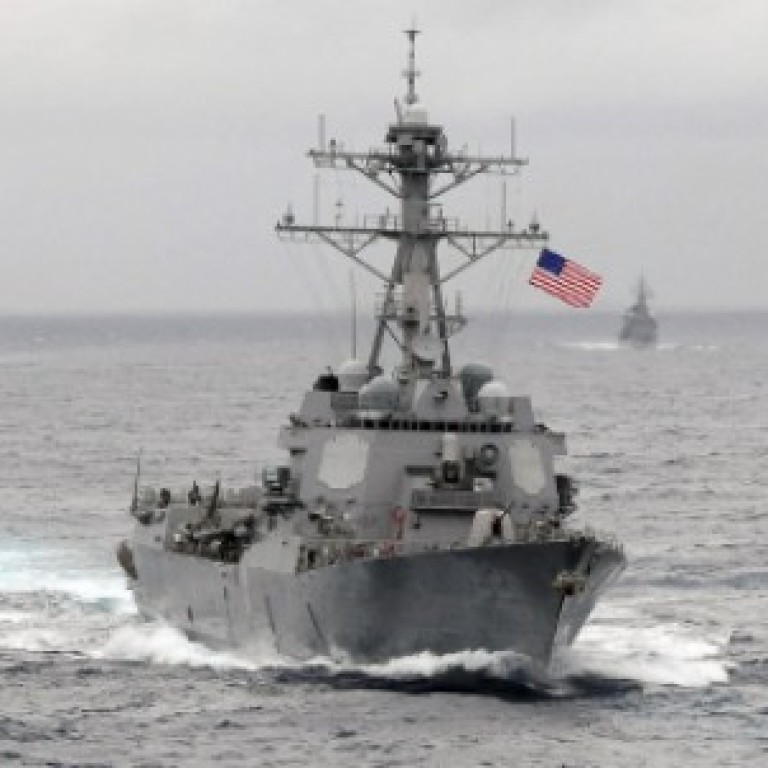
Why did the US choose the Subi and Mischief reefs for its South China Sea patrol?
An American warship’s patrol within a 12-nautical-mile (22km) limit around Mischief and Subi reefs in the South China Sea on Tuesday was all part of a carefully planned and well-played game to make China lose face, says a mainland analyst.
No legitimate claim existed covering the area of sea in which the two reefs were situated, said Xue Li, an expert in international affairs at the Chinese Academy of Social Sciences.
“The US patrol by the USS Lassen did not violate international law,” Xue said.
“It was a political game – just to make the Chinese lose face, especially as the Communist Party’s Fifth Plenum is going on.”
READ MORE: US ‘playing with fire’: Chinese media’s fury after warship sails near disputed South China Sea islands
China, Vietnam, the Philippines, Malaysia, Brunei and Taiwan all have overlapping claims in the South China Sea.
The mainland has been building military and civilian facilities on seven reefs of the Spratly archipelago since late 2013.
Three of the seven – Subi, Mischief as well as Gaven – are so-called “low-tide elevations”, which lie above water only at low tide.
READ MORE: Beijing has options if US escalates challenge to its claims in South China Sea
According to the United Nations Convention on the Law of the Sea, natural islands are able to claim a territory of 12-nautical-miles of sea that surrounds it.
However, a low-tide elevation has no territorial claim to sea surrounding it.
Although Mischief and Subi have now become the first and second largest permanent areas of land on the Spratly archipelago after months of reclamation, man-made islands are not recognised by the international law.
In practice, they could have only a “safety zone” radius of 500 metres, Xue said.
READ MORE: US, China to hold talks on American warship’s patrol in disputed area of South China Sea
Yet since the destroyer USS Lassen never came as close as 500 metres during its patrol, China was able to make only symbolic political gestures, such as protesting, and summoning Max Baucus, the US ambassador to China, Xue added.
In fact, in their protests, Chinese diplomats have never referred to the area that USS Lassen entered as its territorial sea.
Instead, Foreign Minister Wang Yi, ministry spokesman Lu Kang, and Cui Tiankai, China’s ambassador to the US, all described it as “waters near the relevant reefs”.
China has drawn a U-shaped demarcation line around most of the South China Sea.
However, it has never announced its sea territorial baselines in the Spratly region.
“China has intentionally kept it murky, and will not be likely to clarify things in the near future,” Xue said.

